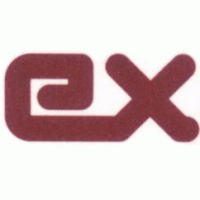Serious question of a fool: Is that independent from MBR?
Yep, it is.
But I do understand your perplexities as very often the three main parts of a hard disk are WRONGLY "exchanged" and very oftten the bootsector is confused with the MBR.
The Master Boot Record is called "Master" as there is one MBR on each drive, no matter how many partitions (read drive letters) are there on the drive.
It is the first absolute sector on the drive.
There are as many bootsectors as there are partitions (read drive letters) on the drive, the bootsector is the first sector of a partition.
If there is an Extended partition, there is also a EMBR (sometimes called EPBR), but this is out of the scope of this post.
I can recommend you the reading of this:
http://www.ranish.com/part/primer.htmof which there
is was a German version too:
http://web.archive.o...t/primer_de.htm(courtesy of the Wayback Machine)
Some examples:
LINUX (original - almost any modern distro uses a bootmanager):
1.BIOS loads first sector of the disk
2.the code in the first sector of the disk (called MBR or Master Boot Record) calls first sector of Active partition (called the bootsector)
3.the code in the bootsector calls LiLo (Linux Loader) or other loader
4.LiLo (or other loader) boots the Linux Kernel
DOS/Win9x/Me:
1.BIOS loads first sector of the disk
2.the code in the first sector of the disk (called MBR or Master Boot Record) calls first sector of Active partition (called the bootsector)
3.the code in the bootsector calls IO.SYS
4.IO.SYS boots DOS
NT/2K/XP/2003
1.BIOS loads first sector of the disk
2.the code in the first sector of the disk (called MBR or Master Boot Record) calls first sector of Active partition (called the bootsector)
3.the code in the bootsector calls NTLDR
4.NTLDR reads BOOT.INI and, depending on what is chosen either:
a. boots a NT/2K/XP/2003 system
b. calls a bootsector file
VISTA
1.BIOS loads first sector of the disk
2.the code in the first sector of the disk (called MBR or Master Boot Record) calls first sector of Active partition (called the bootsector)
3.the code in the bootsector calls BOOTMGR
4.BOOTMGR reads Boot Configuration Database (BCD) and, depending on what is chosen either:
a. calls Winload.exe that boots Vista
b. calls NTLDR (see above for NT/2K/XP/2003)
c. calls some other loader
As you can see, differences only start AFTER step 2. in the above examples.
The "normal" PC booting sequence is well detailed here:
http://www.pcguide.c...Sequence-c.htmlThis article explains VISTA booting rather well:
http://ezinearticles...o...w&id=794745Using a bootmanager/bootloader like grub4dos the sequence may be different, and it depends on how grub4dos is installed, as grub4dos can work also as a MBR and can bypass the bootsector code alltogether.
To sum up:
Linux:BIOS->MBR->bootsector->loader->OSDOS:BIOS->MBR->bootsector->OSNT/2K/XP/2003BIOS->MBR->bootsector->bootmanager(NTLDR)->choice->loader(NTLDR again)->OS | ->bootsector file ->whatever it doesVISTABIOS->MBR->bootsector->bootmanager(BOOTMGR)->choice->loader(Winload.exe)->OS | ->bootmanager(NTLDR)->(see above)
I hope the above is clear enough, and not too confusing....

jaclaz
P.S.: Just found a possible explanation of the changes in the Vista MBR code:
http://www.multibooters.co.uk/mbr.htmlA Larger IPL
Historically the Microsoft MBR bootcode (the IPL - Initial Program Loader) mainly just checks the partition table to see which partition is marked as the active one on the disk and then passes control to the OS bootcode in the PBR (Partition Boot Record) of that active partition. It can generate only a few error messages, which you can see after the bootcode and before the disk signature. The Vista bootcode (in yellow) in the MBR has grown in size slightly over that of XP, but still only occupies no more than the space before the disk signature on the very first sector of the drive. I have looked for but not found one single byte in any of the free sectors between the MBR and the first partition.
The purpose of the extra code is not clear, but it seems it may be mainly to do with the BitLocker drive encryption system. This MS white paper asking computer suppliers not to hook their recovery systems into the MS bootcode gives some insight. I have tried replacing the Vista bootcode in the MBR with that of XP, Win98, Linux's Grub and with that of four other MBR bootmanagers. Unsurprisingly, in all cases Vista boots just fine. It's too early to say for sure but this suggests that the extra code is not actually a required part of the IPL and as in previous Windows it remains OS-Independent, as least when a Trusted Platform Module and BitLocker are not being used.













